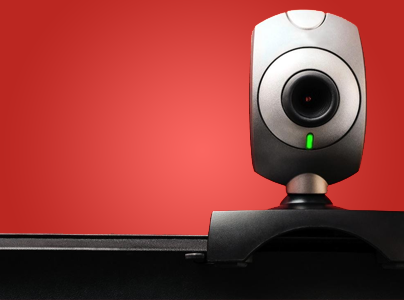
A few clicks of the mouse, and your webcam is activated and ready to be used. But have you considered the possibility that someone else could be watching you through your own webcam? The thought of this probably sends chills down your spine, and it should, as this is very real- and extremely creepy.
How Webcams Get Hacked
Hackers utilize a type of software called remote access tool (RAT) that allows them to remotely access a computer as if they were physically there. Though RATs were designed for legal purposes, like allowing a technician to remotely access a user’s computer to troubleshoot problems without having to physically be there, hackers exploit this software for their own benefit.
Typically, a hacker lures an unsuspecting user into clicking on a link, opening a picture or email attachment, visiting a specific website, or downloading some software. After the user falls for one of these, the RAT software is secretly installed onto the user’s computer. The hacker now has remote access to the user’s computer.
Preventing Your Webcam from Being Hacked
Many articles recommend covering the lens of the webcam with a piece of paper to prevent hackers from spying on you. But doing that alone is brushing the real problem under a rug. Having your webcam hacked means your PC has been compromised by some malware, and you need to take immediate action to get rid of it.
Fortunately, here are some easy things you can do that can prevent your computer from being compromised in the first place.
Don’t be click-happy
Hackers lure victims into installing RAT software onto their PC by disguising links, pictures, or email attachments as something desirable, such as free music, movies, or desktop wallpapers. Be wary of suspicious websites that offer similar items. Also be cautious about clicking on shortened links you may find on social media sites.
Equip your computer with an antivirus program and two-way firewall
Having an antivirus and two-way firewall is minimum security any PC should be equipped with. An up-to-date and active antivirus helps to detect and remove malware from infecting your computer. A two-way firewall monitors inbound and outbound traffic to-and-from your computer.
Be cautious of tech support offering remote assistance
Hackers may physically contact you by claiming there are problems with your computer. They’ll try to persuade you to install a program that allows them remote access to your computer, so that they can “fix” the problem. Simply ignore calls from those who claim they are tech support.
Secure your wireless connection
A hacker can easily hack into unsecure Wi-Fi networks with a laptop, antenna, and widely available software. Don’t make it easy for them. Secure your wireless connection with a strong and complex password.
Disable Windows Remote Access
Though most RATs deployed by malware are custom tools, disabling Windows Remote Assistance and Remote Desktop is one thing you can do to prevent hackers from remotely accessing your computer.
To disable Remote Assistance and Remote Desktop for Windows 7, follow these steps:
1. Click on Start and find Computer
2. Right-click on Computer and select Properties

3. Click on Remote settings on the left-hand side

4a. Under the Remote tab, uncheck “Allow Remote Assistance connections to this computer.”
4b. Under Remote tab, click on “Don’t allow connections to this computer”

5. Click OK